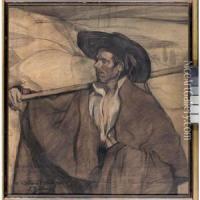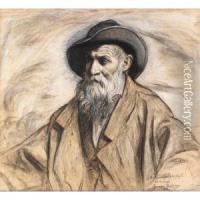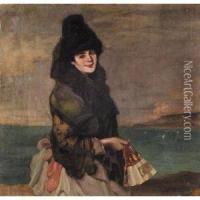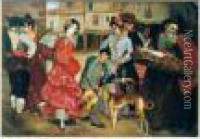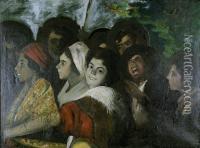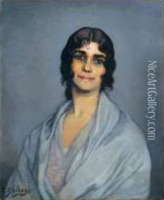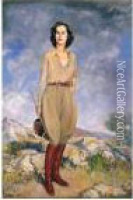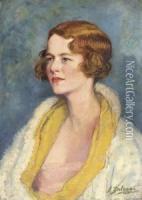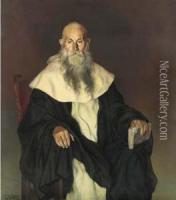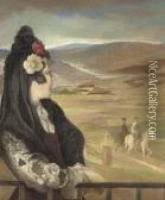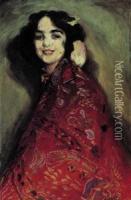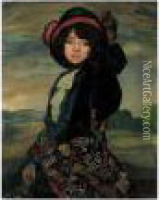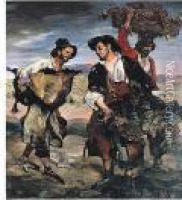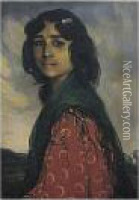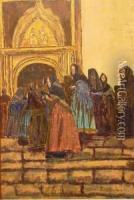Ignacio Zuloaga Y Zabaleta Paintings
Ignacio Zuloaga y Zabaleta was a Spanish painter, born on July 26, 1870, in Eibar, a small town in the Basque Country of Spain. He was known for his dramatic portrayals of traditional Spanish characters, landscapes, and historical scenes. Zuloaga's work is often associated with the Spanish Generation of 1898, a group of novelists, poets, essayists, and philosophers active at the time of the Spanish-American War who were involved in a cultural renaissance and redefined Spanish national identity.
Ignacio was born into a family with a strong artistic tradition; his father, Plácido Zuloaga, was a renowned metalworker, and his grandfather was a decorator of churches. Despite this background, Ignacio initially pursued an interest in bullfighting before dedicating himself to painting. He moved to Rome in 1889 to study art, and later to Paris, where he was influenced by the works of the Impressionists and Post-Impressionists, but he eventually rejected their styles in favor of a more traditional, realist approach.
Zuloaga's artistic breakthrough came with his painting 'Daniel Zuloaga and His Daughters', which was exhibited at the Universal Exhibition in Paris in 1900. This painting helped establish his reputation, and he became known for his works that often featured figures set against the backdrop of the rugged Spanish landscape, imbued with a sense of dramatic tension and emotional depth. His subjects ranged from portraits of Spanish intellectuals to scenes of everyday life, bullfighters, and gypsies.
Throughout his career, Zuloaga continued to exhibit internationally, achieving success and recognition. He was awarded a number of medals and prizes, including the Grand Prix at the Venice Biennale in 1930. His work was also exhibited in the United States, contributing to his international stature.
Zuloaga's style was characterized by a somber palette, a strong sense of composition, and a focus on the character and psychology of his subjects. While his work was rooted in the realist tradition, he also incorporated elements of Symbolism and Expressionism.
Despite the popularity he enjoyed in his lifetime, Zuloaga's work was sometimes met with controversy. His portrayal of the Spanish people and culture was sometimes seen as too severe or stark by his critics. Nonetheless, he remained a prominent figure in Spanish art until his death on October 31, 1945, in Madrid.
Today, Zuloaga's paintings can be found in many major museums across the world, including the Museo del Prado in Madrid, the Bilbao Fine Arts Museum, and the Metropolitan Museum of Art in New York. His home and studio in Zumaia, Spain, have been converted into a museum dedicated to his life and work.
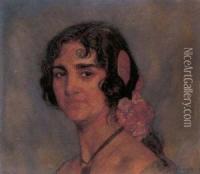
![[trois Espagnoles].](https://www.niceartgallery.com/pic/c982fbb7/1714942s.jpg)
